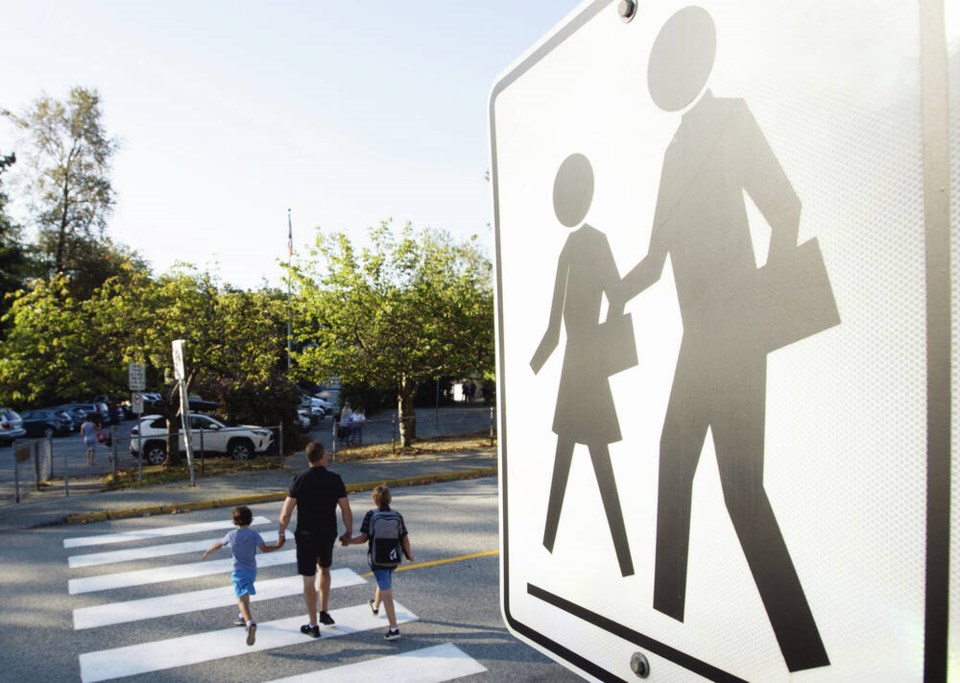Summers around here go really fast. Too fast and, unfortunately, it’s almost time to return to the school routine. So it’s probably time to talk about keeping kids safe around our roads as the fall is nearly upon us.
Across North America, car crashes are the leading cause of death for people ages five to 29. In ÎÚÑ»´«Ã½ in 2019, there were 1,457 child pedestrian and bicycle injuries and 20 fatalities. While those numbers aren’t astronomical, it’s the anguish of children being affected that hits so hard for families and communities.
As adults and parents, we have a duty to educate children as early as possible about being both aware and safe around our busy streets.
Navigating a streetscape is not intuitive for children. They have the burning desire to run free, lost in the joy of their own world. At the same time, they have not gained an awareness of problems approaching them from multiple directions.
The most fundamental rule for me is to look in all directions when crossing a street. I see kids crossing at signals, which of course is a good thing, but I often worry when I see the head down or just looking straight ahead when crossing. Many times this is compounded with older kids who are “plugged in” and really unaware. “Stop, look and listen” is the key message.
Even when crossing properly, it’s important to be scanning side to side. That includes looking over your shoulder as you step out to ensure that car making a right-hand turn beside you is aware you are there. It’s not always practical, but even if there are sidewalks, it’s a good idea to walk on the side of the road where kids can face oncoming traffic. An extra second of reaction time can make a difference.
It’s also important to understand is what all the signal lights mean. It’s an easy game that can be learned quickly as kids have an innate fascination with colours and lights. Teach them the meaning of green, yellow and red lights, along with the importance of pedestrian signals.
It’s hard to control, but children running near the road is very risky. Children run because they have an objective: beating their brother in a race, seeing a friend or grandparents or being first in line for an ice cream. In those moments, awareness of the environment is lost and the chances of falling or moving off of a sidewalk increases.
Clearly and regularly communicating about the danger of running into the street is essential. Safety experts agree that physically blocking or even tripping a child to the ground is safer than allowing them to run onto the road. A couple of skinned knees or even a broken arm is better than being struck by a two-tonne car.
There are also some things we don’t often think about when keeping our kids safe around the road, like not sticking heads or arms out the car window. There’s the chance of catching a pole or another vehicle as they pass by but also a good chance of taking a piece of road debris or an insect right in the face at 50 km/h or faster.
Inside the car, seatbelts and child seats should always be used. Loose objects, like toys, rolling around can interfere with pedals and vehicle controls — while being hit in the head with a Spider-Man or an Obi Wan Kenobi is really very dangerous for a driver.
Kids should always exit a vehicle from the passenger side or away from traffic. If there are a number of little ones to get out, those getting out first should be told to remain still and touch the side of the vehicle until everyone else is out safely and ready to go. Awareness matters here as well. Kids should be taught to look around and think about cars as they get out, even in the mall parking lot.
Safe cycling for kids is in a special category unto itself, one to be discussed later.
What also matters is setting the proper example as a safe and aware road user for our kids. Cursing, swearing or extending the finger when things go wrong on the road is exactly the wrong message when you’re preaching safety the rest of time. Children are sponges and will soak up your bad habits as quickly as your good ones.
Road safety awareness for kids starts as soon as you leave the front door. Practise it every time you’re with them on our busy streets.



